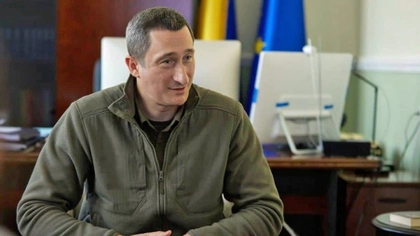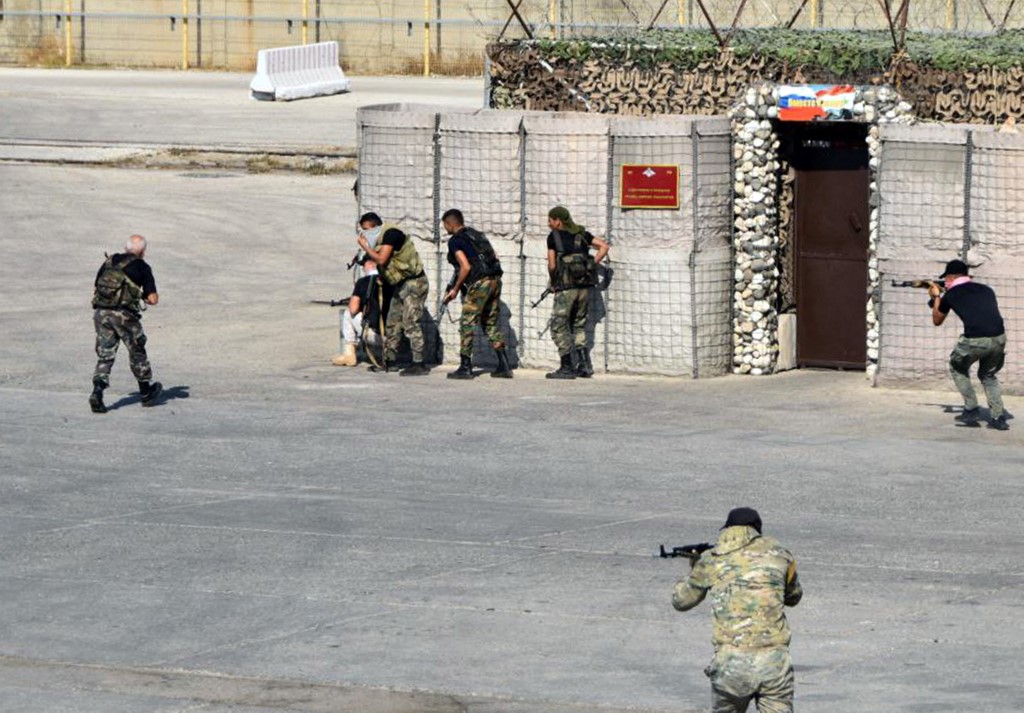We are sitting in a closed and secret control point of a battalion of Unmanned Systems, 20 km (12 miles) from the front. In front of me is a lieutenant colonel, commander of the Heavenly Punishment battalion, whose call sign is “Horse.” He directs drones for both reconnaissance and destruction of the enemy along the entire front for which the 54th Separate Mechanized Brigade is responsible.
We talk to him about how drones have changed this war, what it takes to become a UAV operator, what frontline stories and enemy eliminations have become iconic for him, and how artificial intelligence will change the wars of the future.
JOIN US ON TELEGRAM
Follow our coverage of the war on the @Kyivpost_official.
Why does the brigade now need a whole battalion of UAVs? How did drones become a separate branch of the Armed Forces?
The war changed gradually in two years. Some of the first drones that appeared in our Armed Forces were observer UAVs, “Wings,” and “Quadcopters” – they’ve been used for a long time. It’s a continuation of development. Then the idea arose to destroy targets. At first, these were star discharges from the Mavics. And then, when there was an acute shortage of artillery systems and shells, and the enemy needed to be hit, there was a need to organize such units. There’s management, support, crews performing tasks, and intelligence, which scouts targets, adjusts targets, and hits targets day and night with different platforms. The main focus now is FPV [first person view]. We use them most often and tailor them for certain tasks. There are also night bombers, “Baba Yaga,” as the Russians call them. This is the command post. They make money here. We have Star Wars here! They monitor the situation along the front line, identify targets, and perform the battle capturing function. A command is given to the crews or means of destruction on what sequence to hit. The sequence of crews is determined, and a command is given to work. Then the results of the work are summed up. The type of ammunition is determined depending on the nature of the target, and this is distributed to the crews.

Foreign Troops May Be Deployed to Ukraine to Monitor Potential Ceasefire: Reports
What does the success of crews depend on?
It all depends on the nature of the terrain. There’s simple terrain, a steppe from horizon to horizon, where you find some kind of hillock and can fly as you like. Then there’s difficult terrain, like in our direction, where there’s an altitude difference. The last target we hit had an altitude difference of 250 meters. It was behind a mountain, under a slope, making it very difficult to fly there. Hence, the consumption of drones. Up to 40 percent of drones are lost due to various reasons. But this is general statistics. It differs across parts of the front. I have a guy who is a record holder, with 100 percent hits.
Anti-drone radio systems: How seriously do they counteract the operation of drones?
Electronic warfare (EW) is serious. Systems of action and counteraction are developing rapidly. We are constantly coming up with something new, and they are responding to these challenges, trying to work ahead of time. This is a serious part of the job – to combat it. It has a powerful effect on the use of drones.
What are the priority targets for the drone?
The priority of targets depends on the situation. For example, there’s a working artillery installation that covers the positions of our infantry. If it’s the active phase of assaults, then the priority for us is enemy infantry. If there’s a lull, we look for trucks unloading combat kit. The speed of response to the target is determined by the speed of approach to the target. It can be 10 minutes, 15, or 20. Sometimes you have to fly to a place where the target is not yet present, but according to intelligence, should arrive there. It’s like a good sniper – you aim not where the target is, but where it should be in the next moment.
How long does it take to become a drone operator?
Infantrymen can become drone operators quickly, like an average engineer. But to become a successful drone operator, you need more. Let’s talk about successful drone operators because becoming a mediocre one is not difficult. A bear can learn to ride a bicycle in circles. To become a good drone operator, you need talent. You need to have good reactions. There are even special tests for that. This is online management, and physical qualities of the operator are important. Secondly, you need at least some education in programming, and you must be technically educated. The people who combine these skills become successful because they can adapt to any situation. There is a set of programs and tools to reconfigure the drone, but not every operator can do this. To train a good specialist, you need at least a month – training, working on a simulator, working with combat crews, and gaining personal experience. That’s the minimum. If a person wants to learn and is ready to grow, we try to identify such people. But not everyone becomes a drone operator; some become “fixers,” meaning repairmen. Drones often come under fire – FPVs, Night Lights, and Wings. We’re one of the most effective types of fire support troops, so we’re hunted. We’re a priority target for the enemy. No matter where we are, we’re targeted. Making video clips is one thing, but flying and hitting the enemy is another. If a person shoots well with a drone, it doesn’t mean they’ll become an FPV specialist, but if they understand the mission, anything is possible. We give a recommendation, and they come to the command center. Also, there’s now a Ministry of Defense program that allows the commander of a military unit to call up personnel. Even if someone is mobilized, they can still contact us. We write up a report, and after basic military training, they come to us.
What’s the most valuable target you’ve hit?
The most difficult target from a drone operator’s perspective was at a distance of 20.5 kilometers from the launch point with a 150-meter altitude difference. It was a Msta artillery installation. That’s an important target. It doesn’t matter if they’re on mopeds, MT-LBs, or anything else. Yes, we sometimes chase single targets because we believe that all evil should be punished. During active assault operations, one crew achieved a 1:1.5 kill ratio – one flight, one-and-a-half targets. There were many targets – mostly enemy personnel and equipment.
What’s needed to improve drone efficiency?
All drones must be military-grade. They must not be repurposed. Specifically military-designed, with military requirements. This requires technical specifications and testing not only at the training ground but also in combat conditions. This must be communicated to every manufacturer. Many drones we receive are either unsuitable for today’s needs or outdated. We need drones that will be relevant for tomorrow. Everything we receive, we adapt with our own retainers. There are manufacturers we work with who understand this now, and sometimes it works out. But the drone community needs to be organized, communicate with each other, and produce what the military needs, not what they dreamt up at night.
Will drones replace artillery?
Everything needs to work as a complex. We have more pinpoint accuracy. But all collective weapons are evolving toward one person controlling many. Then we’ll have full dronization. Right now, we still have crews or individuals controlling one drone. Once one person controls multiple drones, maybe we’ll replace artillery, although I’m not sure. We have limited artillery resources. We’re a brigade asset, working across the brigade’s entire sector. Specialists are always in short supply!
What does the 54th Separate Mechanized Brigade UAV Battalion need?
Deliveries. Drones, wings, and ammunition for drones. Intelligence tools are crucial, and we have very few of them. We need reconnaissance capability not only in the near area but also in the rear. There aren’t enough kamikaze drones that can overcome the EW barrier. We use a team of fixers, who also lack enough equipment. We rely on volunteers or communities, but it’s not a constant stream. I tell my team what we need, and they brainstorm and look for funding.
What’s the future of drones?
Artificial intelligence. For example, AI that can recognize targets. AI can do a lot. There are ideas for automatic target detection, where the drone itself chooses and hits the target. There’s AI that, when the signal is jammed by EW, can bring the drone back home because it remembers the route. AI can also determine the destruction point, just like in ballistics. The possibilities are endless.
You can also highlight the text and press Ctrl + Enter






